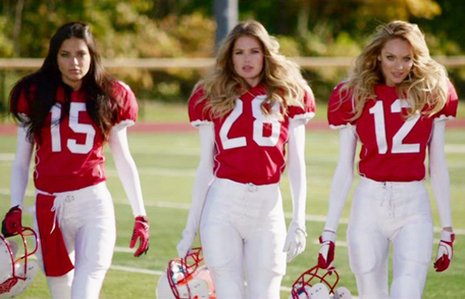By Keith Quesenberry, Marketing Professor, Johns Hopkins University
A recent study from the University of Georgia looked at sexual ads appearing in magazines over 30 years and found that the numbers of ads using sex to sell have increased. Yet, the question remains: Does sex really sell?
Researcher Tom Reichert has studied sex in advertising extensively and found that sexual content in advertising does get noticed. Of course, being noticed is an essential first step if a product is going to be purchased.
Other research, however, paints more of the sex-in-advertising picture. A study from the University of Wisconsin suggests that audiences view ads 10% less favorably if the ads use sex to sell un-sexy products. So, people might not appreciate the gratuitous use of sex in ads, but perhaps sex works for selling sexy products.
Looking beyond the ad/product to the media environment, other research has considered whether putting an ad in a violent, neutral, or sexual TV program improves or impairs memory for the ad. A UK study found that participants who watched a neutral program remembered most. No matter whether the viewers were male or female, young or old, both violent and sexual programs impaired memory for the advertised products.
Last week over 114 million Americans watched Super Bowl XLIX, while advertisers paid a record $4.5 million for a 30-second TV spot. Much was riding on these commercials to be successful. We know that at least half the people watch the Super Bowl for the ads and that brands need their ads to be liked enough that they are viewed and shared in social media. The extra online buzz makes the $4.5 million investment worth it.
So, what is the secret to a likable Super Bowl ad? A colleague and I conducted a two-year analysis of 108 Super Bowl commercials to find this answer. Was it humor or emotion? Did sex-appeal work?
We coded the Super Bowl ads for “story” in terms of five-act development, based on Freytag’s Pyramid, then compared that number with the rating each commercial received in ad rating polls. We found that the more acts there were in a commercial, or the more complete the ad’s story, the higher the ad’s rating and likability.
But what about humor, emotion, animals or sex appeal? They didn’t matter. Those variables appeared at both the top and bottom of the polls with no discernible pattern.
A quick look at this year’s USA Today Ad Meter results confirm our findings and seem to further diminish the notion that sex sells, or makes an ad more likable. The top 10 ads from Super Bowl LXIX contained little or no sex-appeal: Budweiser’s “Lost Dog,” Always “Like a Girl,” Microsoft’s “Braylon,” Doritos “Middle Seat,” Dodge “Wisdom,” Toyota, “My Bold Dad,” Coca-Cola “Make It Happy,” Nissan “With Dad,” and McDonald’s “Pay with Lovin’.” One ad, Fiat’s “Blue Pill,” did have a sexual subject, but the spot did not rely on sexual imagery.
Of the bottom, or least liked ads in the Super Bowl Ad Poll, three tried to use sexual imagery to sell: T-Mobile “Save the Data,” Machine Zone “Game of War,” and Victoria’s Secret, “Let the Real Games Begin.”
In sum, there’s little evidence to support that “sex sells.” Meanwhile, there’s broad concern that over-sexualized ads may be detrimental to societal values. So, the real question that remains is why some advertisers continue to use this type of “Mindless Marketing.”
Learn more about the Mindful Matrix and Mindful Meter.
Check out Mindful Marketing Ads and Vote your Mind!




 RSS Feed
RSS Feed